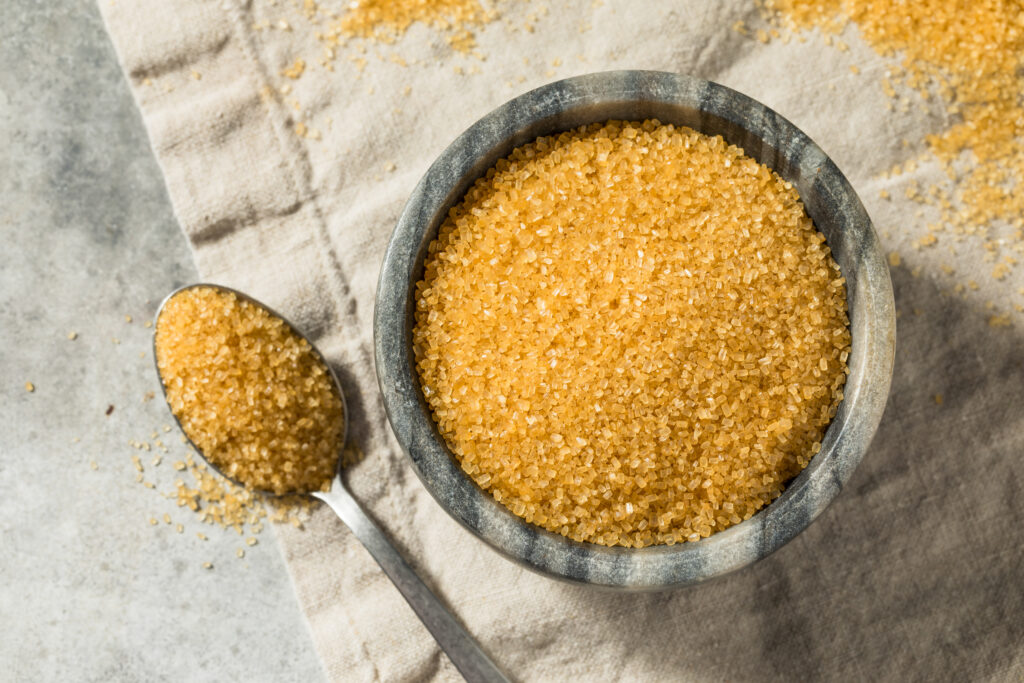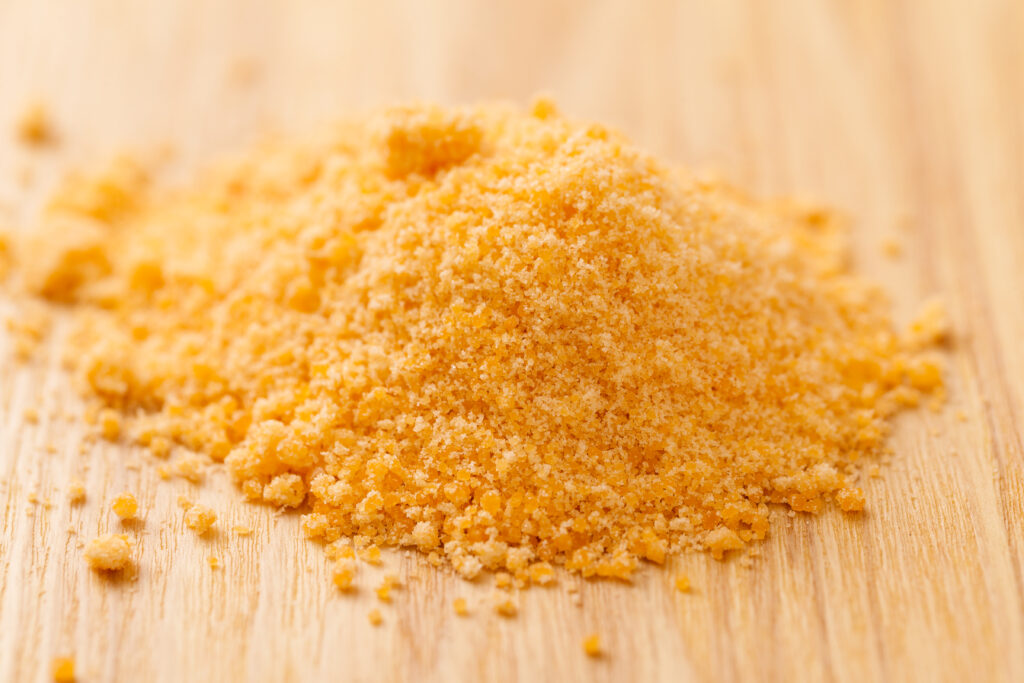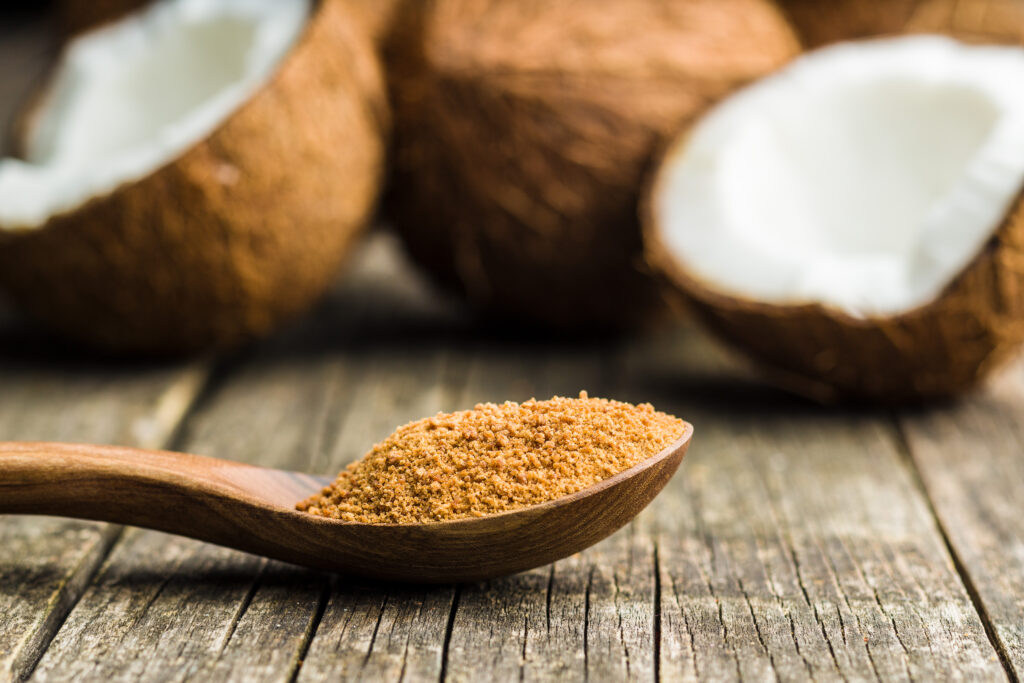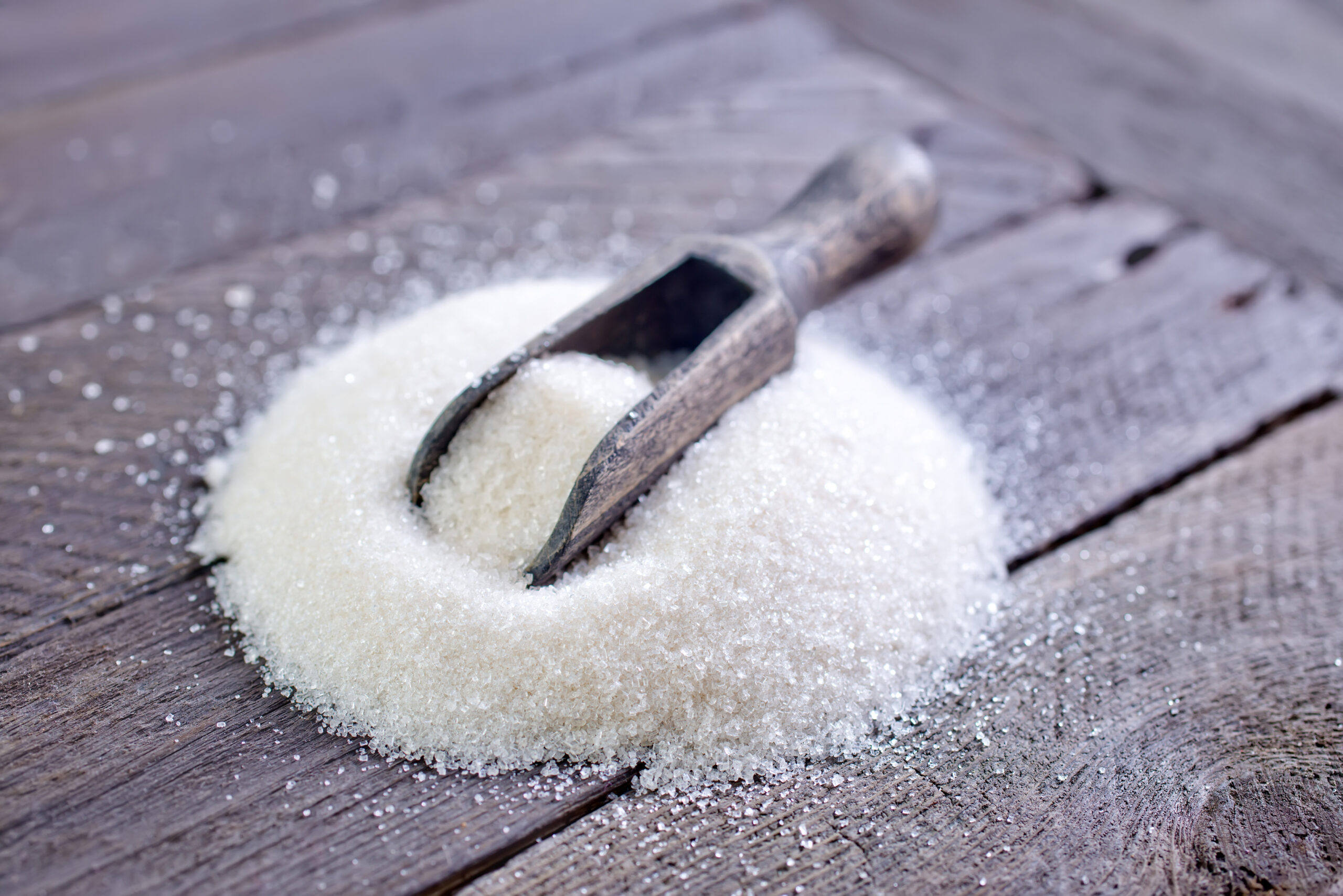Introduction to Crème Brûlée
Crème brûlée, often known as burnt cream, is a dessert that stands out for its simplicity and elegance. Its origins date back to France, where it was first mentioned in François Massialot’s cookbook in 1691.
Crème brûlée stands out with its contrasting layers: a rich, creamy base under a hard, caramelized sugar top. The top’s caramelized sugar adds texture and a slightly bitter flavor. This balances the sweet custard, making it unique among desserts.
This perfect blend of textures and flavors sets crème brûlée apart, making it a staple in fine dining.
Role of Sugar in Crème Brûlée
In crème brûlée, sugar serves a dual purpose. Firstly, it sweetens the custard, melding seamlessly with the creamy base.
Secondly, it forms the dessert’s signature brûléed top, a crisp layer that contrasts the smoothness beneath. The type of sugar used is pivotal in defining both taste and texture. Achieving the perfect caramelization hinges on the sugar’s properties—melting point, granule size, and purity.
Hence, the chosen sugar variety impacts the success of that iconic crisp surface that crème brûlée enthusiasts relish. In this way, sugar
plays an essential role in both flavor and structure, elevating a simple custard to an exquisite confection.
Types of Sugar for Crème Brûlée
When crafting crème brûlée, the sugar chosen is pivotal. Granulated sugar, known for its medium-sized crystals, is a staple in baking.
It caramelizes evenly, creating that sought-after golden crust. Superfine, or caster sugar, with its smaller crystals, dissolves and caramelizes quickly, making it an excellent choice for a smoother topping.

Transitioning to raw sugars, turbinado and demerara offer more complex flavors due to their minimal processing. These sugars contain molasses, imparting a deeper taste with caramel undertones. Their larger crystals provide a more rustic texture, which can be both a benefit for crunch but a challenge for even caramelization.
While granulated sugar is the go-to for its availability and reliability, superfine sugar can enhance the sophistication of the dish.
Meanwhile, turbinado and demerara may require more attention when heating to avoid burning, given their larger grain size and higher moisture content.
Each sugar type offers a different dimension to crème brûlée, allowing for personalization based on flavor preference and desired presentation.
Selecting and Caramelizing the Sugar
- Benefits of Granulated Sugar
Granulated sugar is the preferred choice for crème brûlée due to its consistency in size and its optimal melting properties.
This common household sugar dissolves at the right pace, allowing for a smooth caramelization process. Moreover, its widespread availability makes it a convenient option for this dessert.
Furthermore, granulated sugar’s texture is perfect for spreading evenly across the custard. This ensures that when heated, it melts uniformly, creating a consistently thin, crisp layer. It also has an appropriate melting point that prevents it from burning too quickly, which is crucial to avoid a bitter flavor.
Additionally, granulated sugar is versatile. It is not just for crème brûlée but also for a variety of recipes, making it a staple in the kitchen. Its neutral flavor enhances the natural taste of the vanilla and cream without overpowering them.
In summary, granulated sugar’s properties make it the go-to for achieving that classic shatteringly crisp top layer on crème brûlée. Its reliability and ease of use ensure that even novice cooks can attain professional results in their caramelization endeavors.
Superfine Sugar as an Alternative
Superfine sugar, often recommended as an alternative for crème brûlée, has several benefits for creating a more refined crust. Its smaller crystals dissolve more easily, allowing for a quick and even caramelization. Additionally, superfine sugar can create a thinner, more delicate crust, which is not only aesthetically pleasing but also provides a more subtle contrast to the creamy custard below. This type of sugar, being finer, also minimizes the risk of undissolved grains that can create a gritty texture.
Moreover, the fine quality of superfine sugar ensures a glossy finish to the caramelized layer, enhancing the dessert’s overall presentation. Its ability to melt rapidly under the torch or broiler avoids the risk of overheating the custard before the sugar caramelizes, preserving the smooth texture of the dessert.
In essence, while granulated sugar is the standard for many, superfine sugar offers an elevated experience in both texture and taste, making it a favored choice for those aiming to impress with their crème brûlée.
Raw Sugars in Crème Brûlée

Raw sugars, like turbinado and demerara, bring a distinct twist to crème brûlée, offering a caramel note before even being caramelized. These sugars are less processed, so they retain a molasses flavor that infuses the dessert with a richer, more complex taste.
When using raw sugars, it’s important to consider their larger crystals. These may not melt as uniformly as finer sugars, so some chefs prefer to grind them before sprinkling over the custard. This adjustment helps achieve a more even caramelization.
Furthermore, because of their higher moisture content, raw sugars can behave differently under heat. They may take slightly longer to caramelize, and the window between caramelized and burnt is narrower. Patience and careful watching during the process are vital.
The nuanced flavor and the slightly rustic texture that raw sugars add can elevate a traditional crème brûlée to a gourmet level. They’re perfect for those looking to experiment and impress with a depth of flavor and a professional-looking finish.
Exploring Specialty Sugars for Crème Brûlée

To expand our discussion and reach the desired word count, let’s delve into the world of specialty sugars and how they can elevate the crème brûlée experience. This section will explore lesser-known sugars that offer unique flavors and textures, providing an adventurous twist on the classic dessert.
Specialty Sugars and Their Impact on Flavor
- Muscovado Sugar: This sugar, known for its strong molasses flavor and moist texture, can add a rich, toffee-like taste to the crème brûlée. Its high molasses content enhances the dessert with a deep, warm flavor, making it ideal for a winter variation of the classic.
- Coconut Sugar: Made from the sap of the coconut palm, coconut sugar imparts a subtle hint of caramel that complements vanilla beautifully. While it doesn’t caramelize as smoothly as granulated sugar, its flavor profile makes it a worthy contender for those looking to experiment with new tastes.
- Maple Sugar: Ground from dried maple syrup, this fine sugar brings a unique sweetness with hints of maple. It caramelizes well and can be a delightful substitute for traditional sugars, especially in autumn-themed menus.
Practical Tips for Using Specialty Sugars
- Adjusting Heat and Technique: Since specialty sugars often have different melting points and caramelization properties, adjusting your technique is crucial. A lower heat and constant monitoring can help prevent burning, especially with sugars that contain higher amounts of molasses.
- Trial and Experimentation: Before serving your crème brûlée at a dinner party or restaurant, experiment with small batches to perfect the caramelization process for each type of sugar. Understanding how each sugar behaves under heat will help you achieve the best results.
- Pairing with Other Flavors: Consider the overall flavor profile of your dessert when selecting a specialty sugar. For example, muscovado sugar pairs well with dark spirits such as rum, making it excellent for an adult dessert offering.
This exploration of specialty sugars not only increases the length of your article but also enhances its depth and appeal, attracting readers who are eager to experiment with new culinary techniques and flavors.
Seasonal Variations of Crème Brûlée
Spring Variations:
- Discuss using lighter sugars like coconut sugar or even honey to introduce a fresh, floral note appropriate for spring.
- Suggest incorporating seasonal fruits such as strawberries or rhubarb, which can subtly influence the sugar’s caramelization properties and the overall flavor profile.
Summer Variations:
- Highlight the use of citrus-infused sugars or the addition of citrus zest before caramelizing to bring a bright, summery zing to the dessert.
- Consider suggesting pairing with light, summery wines for an alfresco dining experience.
Autumn Variations:
- Explore richer sugars like maple sugar to introduce warmth and depth, complementing the cooler weather.
- Discuss adding spices such as cinnamon or nutmeg to the sugar for a spiced crème brûlée that fits the autumn ambiance.
Winter Variations:
- Recommend using dark muscovado sugar to create a deep, molasses-rich topping that pairs well with the hearty foods of winter.
- Mention the possibility of adding a splash of dark rum or whiskey to the custard to enhance the winter holiday feel.
These subheadings effectively organize the content, making it easier for readers to find information relevant to their interests or the current season. This structure not only improves the flow of the article but also caters to a wider audience by addressing varied culinary preferences and experiences.
Caramelization Techniques for Crème Brûlée
Caramelizing sugar for crème brûlée can be achieved using various tools, primarily a kitchen torch or a broiler. Both methods require careful handling to perfect the dessert’s famous golden crust.
Using a Torch:
- Prepare the Custard: Ensure the crème brûlée is completely chilled. The cold base helps to get a crisp top without heating the custard too much.
- Sprinkle Sugar Evenly: Cover the custard evenly with a thin layer of sugar. This ensures uniform caramelization.
- Torch the Sugar: Light the torch and hold it about 4 to 6 inches away from the surface. Move it in a slow, circular motion to melt the sugar evenly without burning it. The sugar should start bubbling and turn a rich amber color.
- Let It Cool: After caramelizing, let the crème brûlée sit for a few minutes. This allows the sugar crust to harden and develop its signature crispness.
Using a Broiler:
- Preheat the Broiler: Set your oven’s broiler to high and let it heat up for about five minutes.
- Sugar the Custard: Similarly, sprinkle a thin, even layer of sugar over the chilled custard.
- Broil: Place the ramekins under the broiler. Keep the door slightly ajar and watch closely—the sugar should caramelize in 1 to 2 minutes.
- Monitor Closely: Remove the ramekins as soon as the sugar turns golden brown. Like torching, allow cooling to set the crust.
Tips for Success:
- Always use room temperature or chilled ramekins to avoid cracking under sudden temperature changes.
- Rotate the ramekins if using a broiler to ensure even caramelization.
- If the sugar starts to burn, immediately remove the heat source to prevent a bitter flavor.
Both methods are effective, but the torch offers more control and is the preferred method in professional settings for its precision. However, the broiler can be a practical alternative for those without a torch, capable of producing equally delicious results with careful monitoring.
FAQs and Troubleshooting for Crème Brûlée
What kind of sugar should I use for the caramelized top? Granulated sugar is typically recommended because it melts evenly, creating a smooth caramel layer. Superfine sugar is also a great choice for a finer texture.
Can I make crème brûlée without a torch? Yes, you can use a broiler instead. Just be sure to watch it closely to avoid burning the sugar. The broiler can achieve a similar caramelized effect.
How thick should the sugar layer be? A thin layer of sugar is best. It ensures even caramelization and prevents the formation of a too-thick crust that can be difficult to break.
Why did my sugar not caramelize properly? This can happen if the sugar layer is too thick or the torch isn’t hot enough. Ensure the sugar is spread thinly and the torch is moved consistently over the surface.
How long should I chill the crème brûlée before caramelizing the sugar? Chill it until it is completely set, which usually takes at least two hours in the refrigerator. This helps the sugar to caramelize quickly without heating the custard too much.
These common questions highlight the nuances of making perfect crème brûlée, from choosing the right sugar to using the proper techniques for caramelization.
Conclusion: Summary and Best Practices
In conclusion, selecting the right sugar for crème brûlée significantly influences both flavor and texture. Granulated sugar is generally the best choice for achieving a uniformly caramelized top, while superfine sugar can provide a finer, smoother finish.
For those seeking a richer flavor, raw sugars like turbinado add a molasses depth. Always ensure the sugar is spread thinly and evenly for optimal caramelization.
Remember, the perfect crème brûlée combines precision in sugar selection with careful caramelization techniques, ensuring a delightful contrast between the creamy custard and the crisp, caramelized top.


1 thought on “What kind of sugar is best for crème brûlée?”